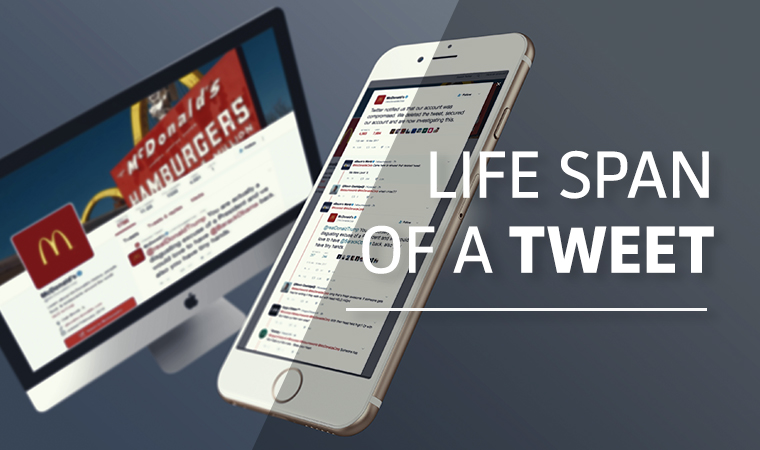Why Fast Isn’t Fast Enough in a Crisis & Why McDonald’s will be Just Fine
Social media pros cringed as news broke this morning of McDonald’s troll-ish tweet at President Trump this morning.
In later news updates, both McDonalds and Twitter were lauded for their quick action—Twitter notified McDonald’s the account had been breached, and McDonald’s deleted the tweet within 15 minutes, replacing it with a new update:
Twitter notified us that our account was compromised. We deleted the tweet, secured our account and are now investigating this.
— McDonald’s (@McDonaldsCorp) March 16, 2017
It’s true, 15 minutes is very swift action for such a huge corporation.
But in the life span of a tweet? Forget dog years—we’re talking fruit flies here.
The Short Life of a Lone Tweet
Twitter is one of the fastest-paced social networks out there, rivaled only by Instagram. Consider how quickly your Twitter feed starts to feel dated as the notice at the top tallies up all the new updates piling up between browser refreshes.
How many of those tweets do you even see, let alone process? How quickly do you forget them?
At last tally, about 6,000 new tweets release very second. At this lightning-fast pace, the average tweet that does not get any engagement lasts a matter of minutes, and loses reach with every passing second as it gets pushed down in its followers feeds.
The RT Factor
The key to extending a tweet’s life beyond that initial window is retweets.
Each retweet exposes the post to a new audience, giving the post a fresh “start” of its life, while adding the influence of a reader-selected, presumably trusted endorsement from the account who retweeted.
Thus, retweets tend to beget more retweets, further expanding the life of the original post. (See also: going viral.)
The result is that, when engagement is factored in, a tweet’s life span increases significantly to an average of 18 minutes.
Correlation to Following Size
The key word to that metric? Average.
A tweet’s life span is tightly correlated to the size of an account’s following. At 154,000 followers, this is bad news for McDonald’s on this particular day.
Unfortunately, it can be extremely hard to stop a hot tweet from spreading. As of 4:45 p.m. ET, hours after the original tweet was deleted from the Internet, there are still retweets of the original post being shared as quotes.
What to Do About It
Speaking as a digital content expert for an brand, this is every agency pro’s nightmare. When we see a case like McDonald’s incident this morning, we wince as we laugh, knowing we’re all just a hack or misclick away from this at any time.
But fortunately, there are steps brands on Twitter can take to safeguard against this type of misstep:
• Use security best practices to keep brand social media accounts hard to hack.
• Never put client and personal social media in the same management account (Hootsuite, Buffer, etc.)—and don’t allow members of your team to do this, either.
• Plan content ahead of time with a scheduling tool and work with your team to check each others’ work.
• Do a good old-fashioned double-check before hitting send on a new post—which account are you in?
• As a general rule, maybe just don’t post troll-ish comments in the first place, even from your personal account. You’re a pro, darnit. And a human being.
Crisis Management Still Matters
The good news is, tweet scandals tend to fade from the public consciousness as quickly as tweets themselves.
McDonald’s will, of course, live to tweet another day.
Even more important, while the company’s swift action and proactive crisis management messaging may not have stopped the post from spreading, it is sure to affect consumers’ attitude toward the brand in response.
Most social media users are savvy enough, in this digital age, to understand that hacks happen, and that one rogue employee with a finger on the tweet button does not represent the entire organization.
